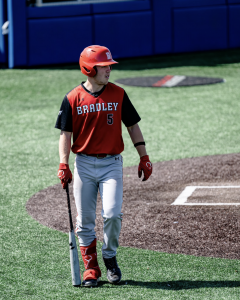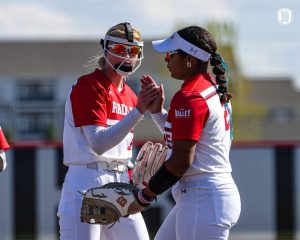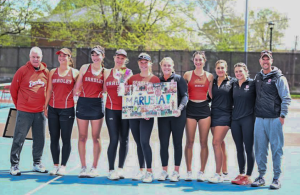Ever since Bud Selig killed the 2002 All-Star Game at Miller Park, the midseason festivities for the major sports have drawn ire from sports fans across the nation.
But this year, with the help of former star Brendan Shanahan, the NHL redesigned the way the All-Star game works and unveiled it in Raleigh, N.C.
And after all was said and done, from this hockey fan’s point of view, it worked.
Instead of the boring old “vote for the stars and let coaches fill out the rest” approach, the league decided to go old school, literally.
Just like the schoolyard days, the league selected elder statesman Nicklas Lidstrom and hometown captain Eric Staal to pick teams.
In a game show environment, these two were joined by assistant captains. Lidstrom had Patrick Kane and Martin St. Louis and Staal had Mike Green and Ryan Kesler.
In the most anticipated and exciting part of the weekend, the captains picked their players.
Staal won the first pick and unsurprisingly chose his goaltender, Cam Ward, first.
The night was filled with jokes like Jonathon Toews getting passed over until the 16th pick, far too low for a top-five player in the game, and Eric Staal picking on younger brother Marc Staal.
The next evening was the traditional Skills Competition, which, as usual, was filled with laughs. The goalie race saw Tim Thomas fall down in the corner, yet get back up and almost win.
The highlight of the evening came when Zdeno Chara once again broke his own record in the hardest slap-shot competition with a blistering 105.9 mph.
Just like the Home Run Derby or the Slam Dunk Contest, the evening was filled with jovial and nonchalant attitudes that give these events life and make these normally stuffy athletes human.
The next day wrapped up the festivities with the actual game. The game saw its usual high score and lack of defense.
My favorite hockey player, Patrick Sharp, came away as the game’s MVP after he tallied a goal and two assists.
In the end, the NHL accomplished what it wanted and reinvigorated a downtrodden event.
By sparking interest with an innovative idea, the league got people to think about the All-Star Game as a relevant part of hockey again.
More than a million people tuned in each night to the Versus network to watch the events, the highest post-lockout numbers for the league.
The draft and skills competition provided opportunities for fans to get to know players like Lidstrom and Staal, who are normally reserved.
These festivities typically end up boring and predictable. But in this season’s case, the opposite was achieved.
With all this said, other leagues should take note. Over the last decade, the major sports have been trying to recapture the audiences they’ve lost.
Baseball’s ploy to make the game count by putting home field in the World Series at stake or football moving the game to the week before the Super Bowl haven’t achieved what they set out to do.
With this new idea, hockey has found a way to bring life back to the All-Star game.




